I spent $298 to sleep in a hotel that used to be an airport terminal, and the retro spot made me feel like I'd stepped into the '60s
Molly O'Brien

- I stayed the night at New York's TWA Hotel, which was originally the 1962 Trans World Flight Center.
- The hotel's rotary phones, old music, and retro decor made me feel like I'd traveled back in time.
I visited TWA Hotel at New York's John F. Kennedy International Airport.
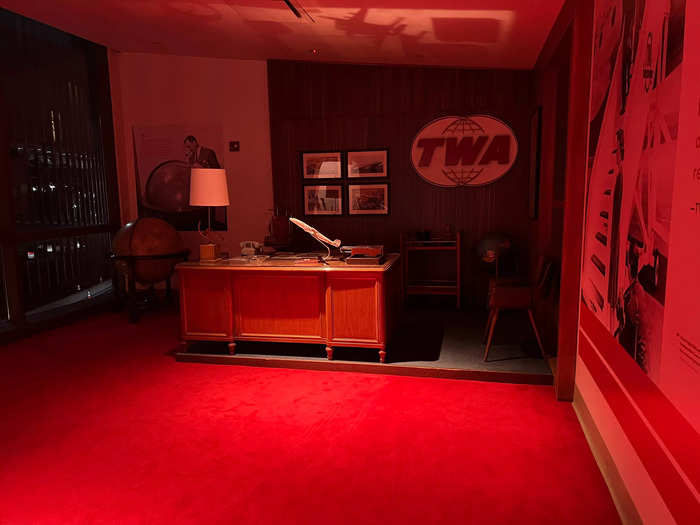
When I arrived at TWA Hotel, I felt like I'd been through a time machine and stepped back 60 years to an earlier era of commercial aviation.
This was exactly what was supposed to happen when I walked into the hotel, which opened in 2019, as it used to be the Trans World Flight Center, an operating airport terminal that opened in 1962.
One unique feature about this hotel is that visitors who don't want to book a standard overnight room can book a daytime room to rest during the morning and afternoon hours.
I chose to visit overnight — here's what my $298 stay was like.
To get to the hotel, I took an elevator directly from JFK's JetBlue terminal.
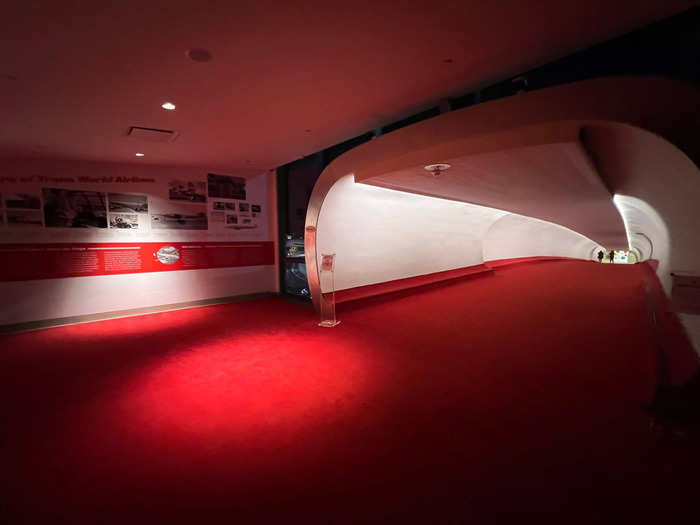
I emerged from the elevator and walked through a dimly lit, bright-red tunnel toward a white light in the distance. As I made my way to the hotel, hidden speakers played music by The Beatles and The Beach Boys.
The check-in desks looked like the airline counters where travelers check their luggage.
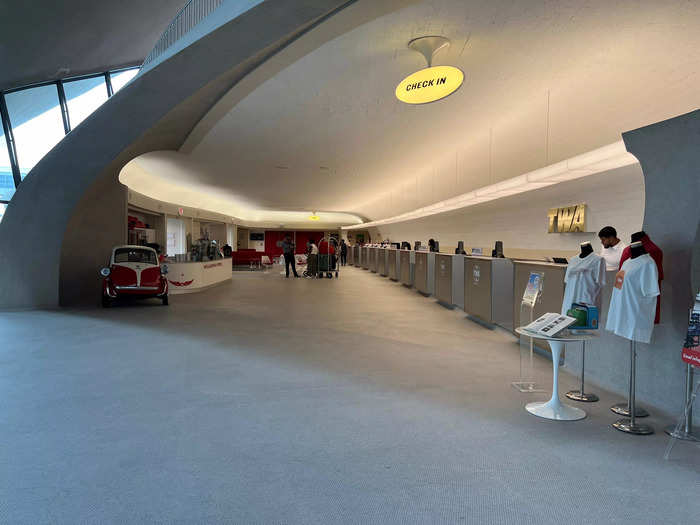
From the moment I walked into the lobby, I could tell that TWA Hotel was once a functioning airplane terminal. There were a lot of these check-in desks.
Every corner of the hotel contained nostalgic decor and historic artifacts.

The decor featured cutouts of people dressed in '60s-era clothing.
In the images, they appear to be embarking on a trip back when travelers were supposed to actually dress nicely for a flight.
Even the prop luggage by the cutouts looked authentic.
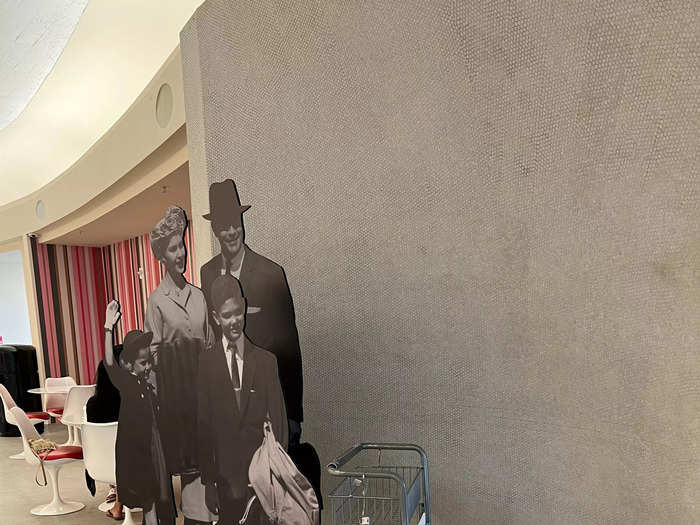
The hotel decor made me feel like I was traveling in the 1960s.
Posters showcased the destinations that Trans World Airlines serviced before American Airlines acquired it in the early 2000s.
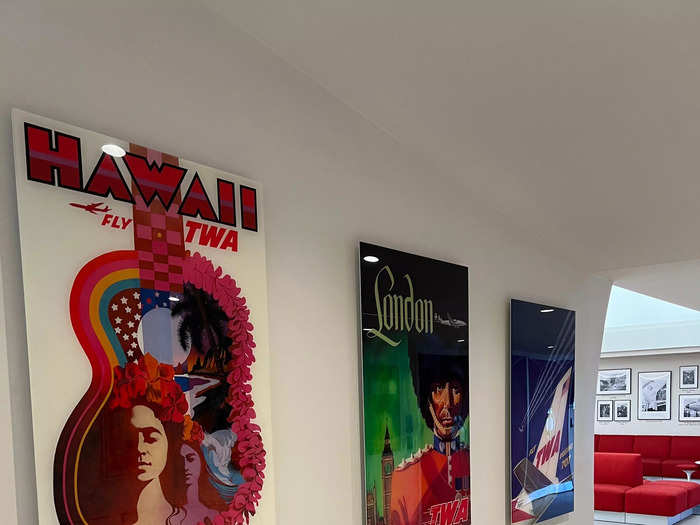
Of course, there was a New York poster since the city has always been a travel hub. I had fun just walking around and looking at the art and decor in the hotel's public spaces.
TWA Hotel also had some really neat exhibits featuring authentic historic artifacts that highlight TWA's legacy and air travel's impact on the modern world.
I'd never seen so many payphones in one place.
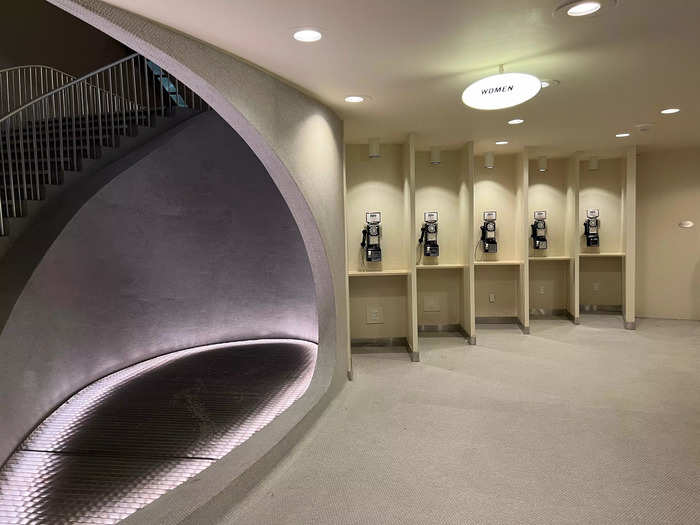
I didn't try to make any calls, so I'm not sure if they actually worked.
One of the hotel's most fun elements was the Twister-themed room.
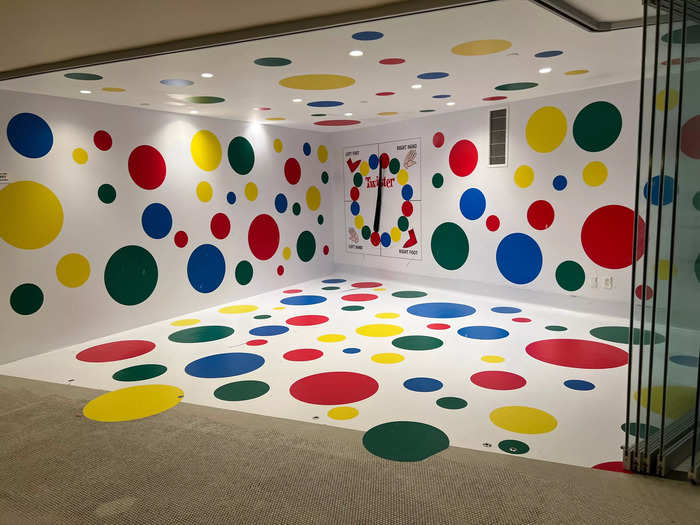
Chuck Foley and Neil Rabens invented Twister in 1966, so the game-themed room fit into the hotel's overall retro feel.
Almost 60 years later, people still pull out the polka dot-covered mat and spinner at parties.
The hotel's public spaces were very open and bright.
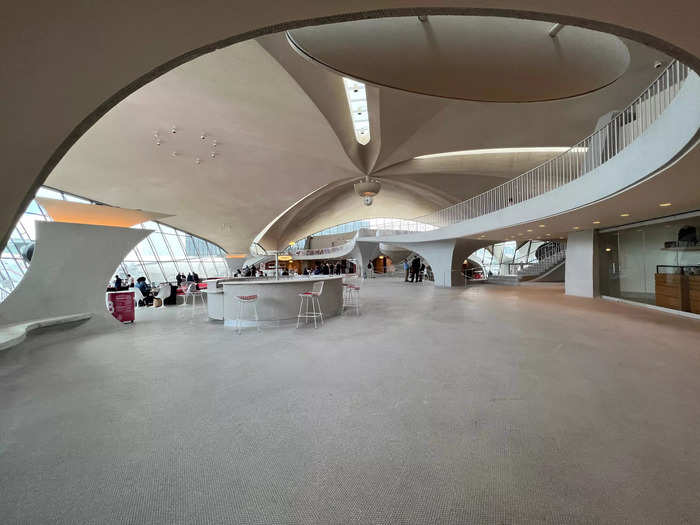
I definitely could tell that this building used to be an airport terminal and was impressed by the restoration.
Guests spend the night in either the Hughes or Saarinen Wing.
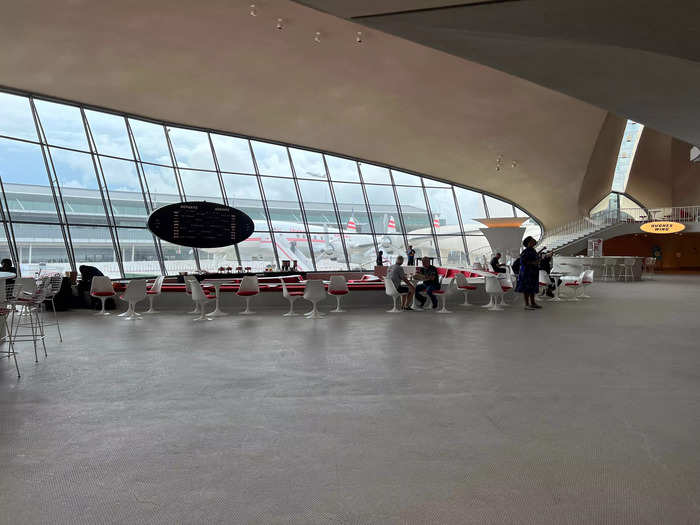
Outside of the lobby area, guests can spend the night in two separate wings. The wings host a total of 512 guest rooms, and both look out onto views of the JFK runways.
My room was on the top floor of the Hughes Wing, named after Howard Hughes, who once controlled TWA Airlines.
The other, the Saarinen Wing, was named after Eero Saarinen, the famous Finnish-American architect who designed the TWA Flight Center (now the TWA Hotel).
Even the elevators up to the rooms had retro decor.
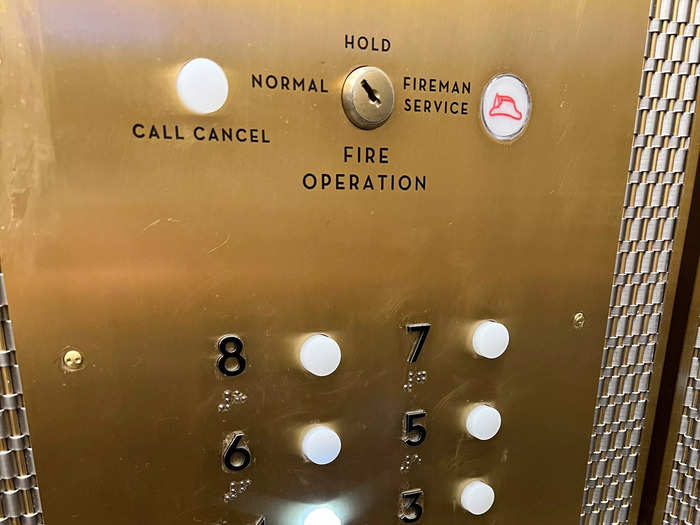
The same 1960s-themed soundtrack that played throughout the hotel's public spaces was also on loop in the elevator.
I will say that after being there for more than a few hours, I could've done with some more modern-day music.
The elevator floor had the classic TWA logo.
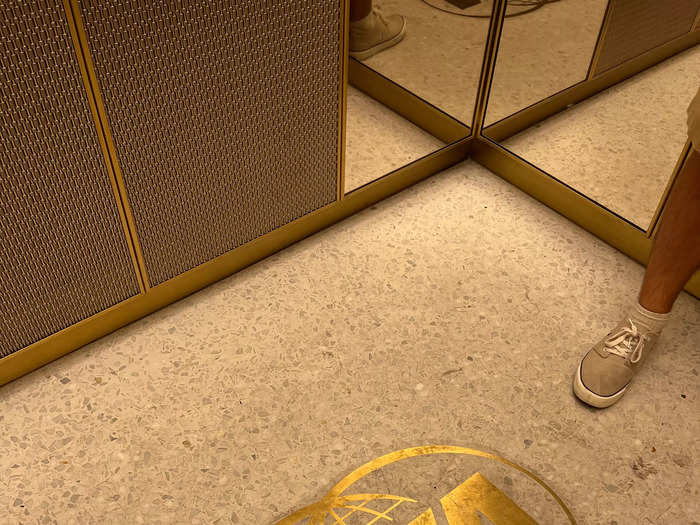
It seemed like not a single detail about TWA's history and legacy was ignored or left out of the hotel's design — even in the elevators.
As I walked down the hallway to my room, I felt like I'd entered the world of "Mad Men."

Even though I felt like I was taking a walk to Don Draper's office, Jon Hamm was nowhere to be found.
My room's decor was retro, but the technology inside was modern.
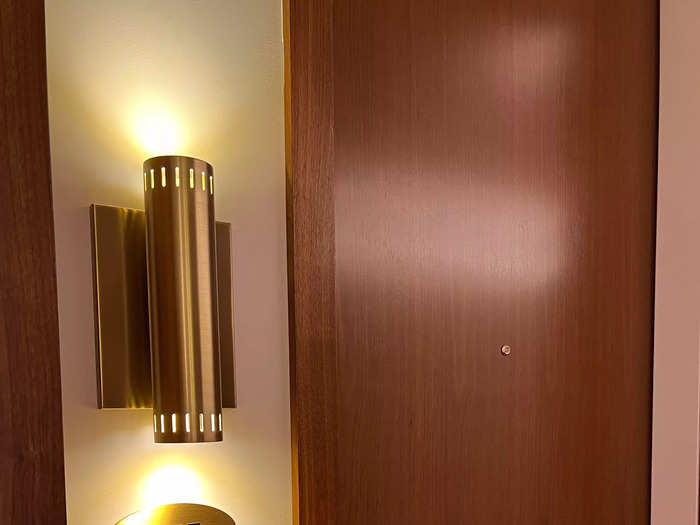
I used an electronic keycard to get into my room, and wireless phone chargers were available inside.
My room felt like a standard hotel accommodation.
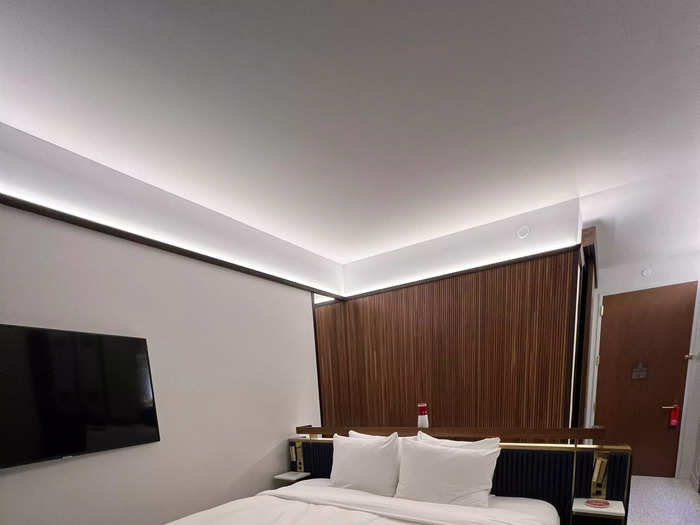
My room featured a view of airplanes taxiing and taking off from JFK but was really well-soundproofed. I couldn't hear any noise from outside.
I enjoyed watching the airplanes arrive and depart from the comfort of my room.
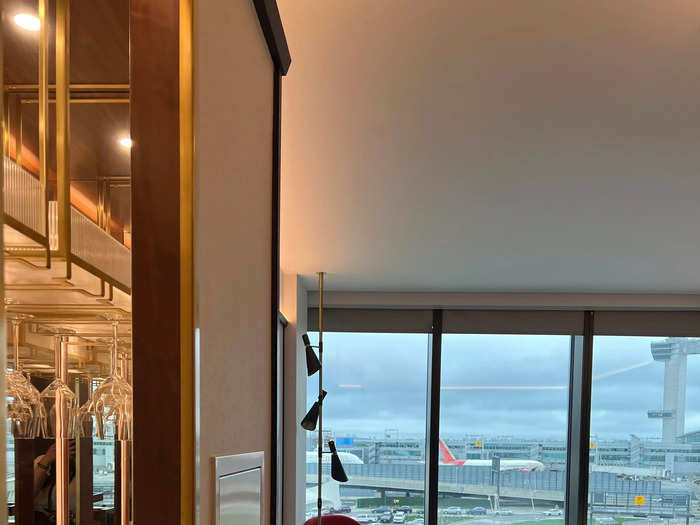
JFK is one of the busiest airports in the United States, so there was always a lot of activity outside of my window.
It was fascinating to think about all of these people coming and going and wonder where they were traveling.
I found a rotary phone inside my room.
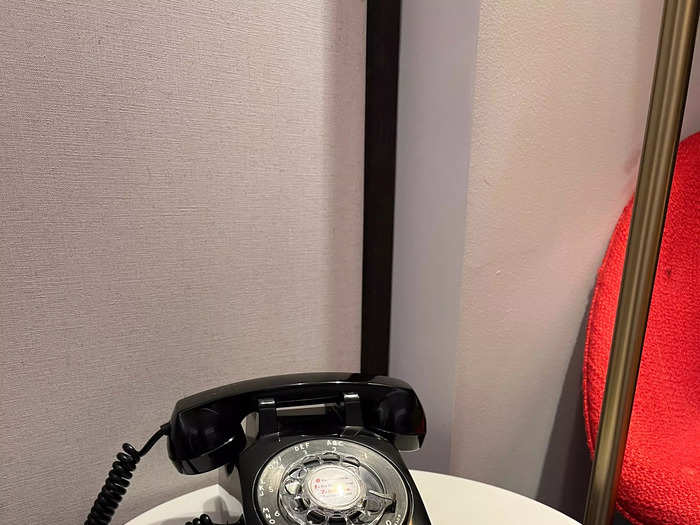
I'm old enough to remember using phones with cords as a kid, but I'm not sure how to use a rotary phone. Luckily, this one seemed to have a modern twist.
The toiletry kits in the bathroom were very on par with the TWA theme.
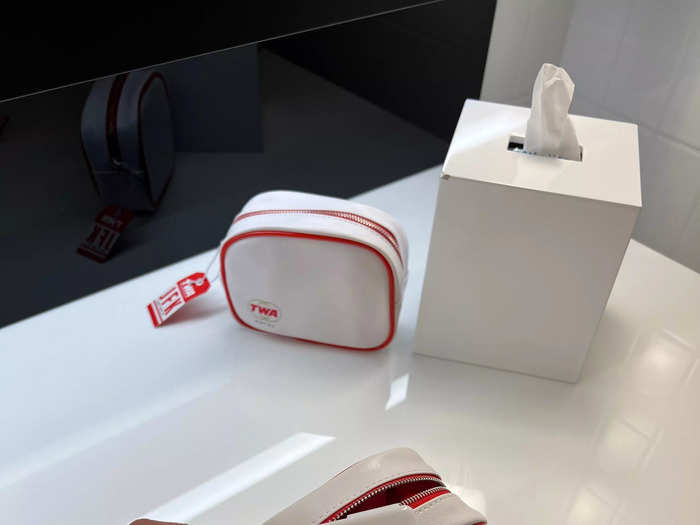
I can imagine the TWA flight attendants carrying little bags similar to these to stay fresh on long-haul flights.
The hotel's public spaces were the perfect place to grab food or learn about the history of aviation.
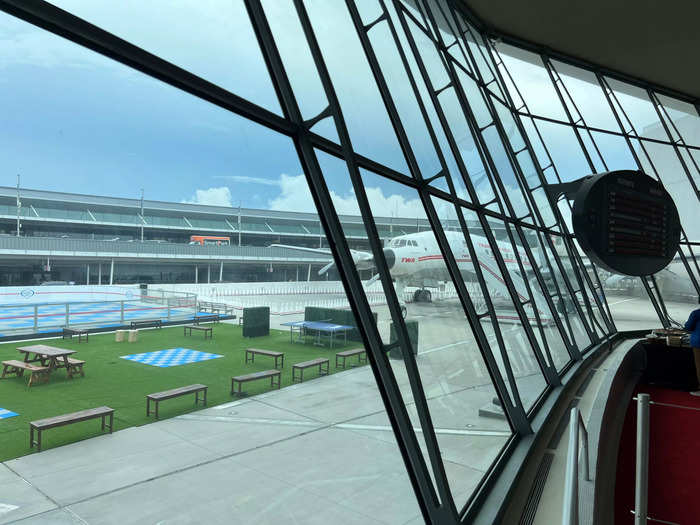
From the big atrium area, I could see the Lockheed Constellation coined as "Connie" outside.
Hughes commissioned the plane in 1939. It broke the existing transcontinental speed record on a flight from California to New York and served as Air Force One in the 1950s.
Today, the inside of Connie is a cocktail lounge.
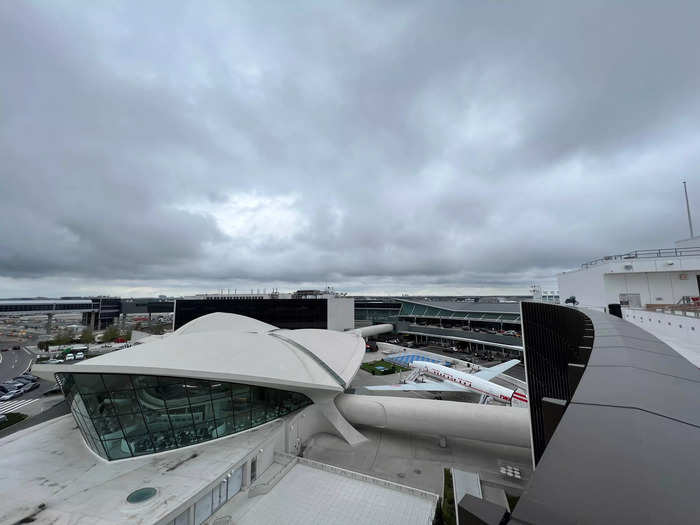
I didn't get to see the interior in person because there was a private event happening, but it sounded pretty neat.
There were multiple bars and restaurants to explore, including The Sunken Lounge.
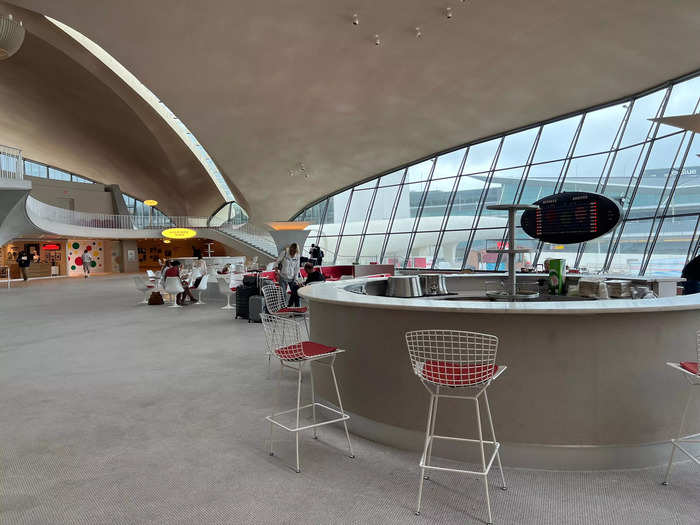
The Sunken Lounge is where fans gathered to watch The Beatles arrive in the United States back in 1965. Today, it's another bar.
The Paris Café by Jean-Georges was where the terminal's original Paris Café and Lisbon Lounge used to be.
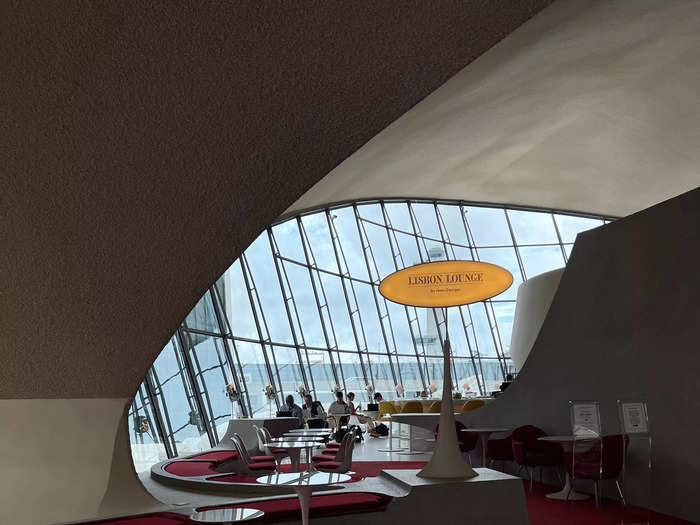
The atmosphere in the Paris Café was laid back when I sat down on a Monday morning, but I could tell that it turned into a classic, lively spot with fun events in the evening.
Menu items were standard, and the prices were in line with what I'd expect for fancy food at an airport hotel. Plus, there was a beverage menu full of 1960s-inspired cocktails.
I found other fun food options in the large food hall downstairs.
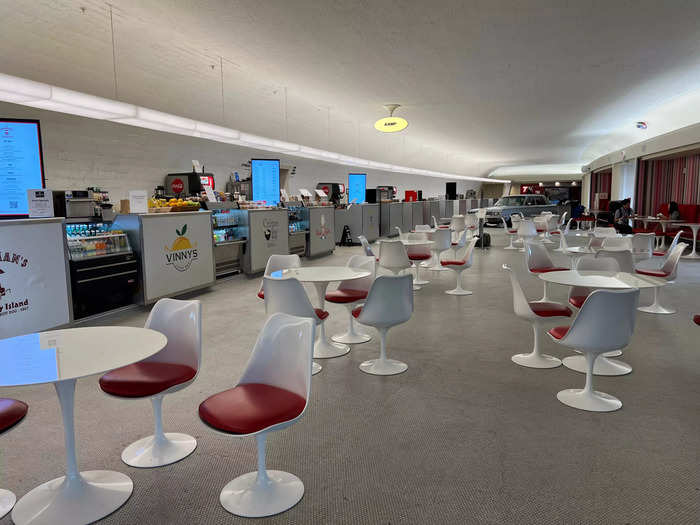
It featured a collection of local foods from spots like Feltman's of Coney Island and Mister Softee.
There were modern dining options, such as the Intelligentsia Coffee bar, as well.
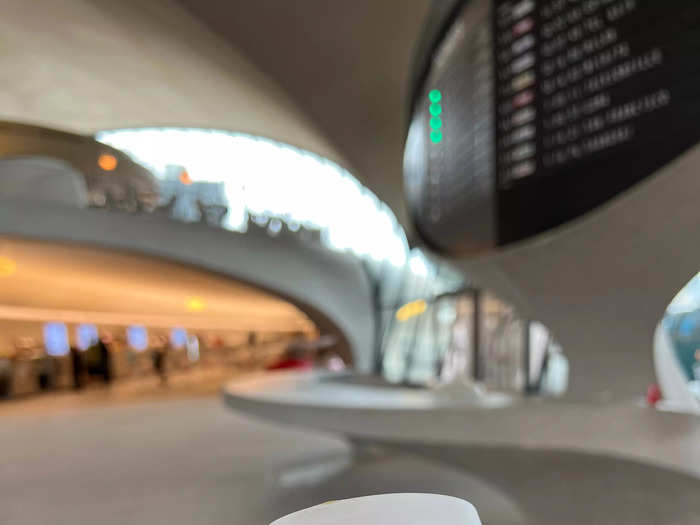
I purchased a very expensive latte from Intelligentsia. If only the hotel featured 1960s-era prices, too.
The last stop before my departure was upstairs at the famous TWA rooftop pool.
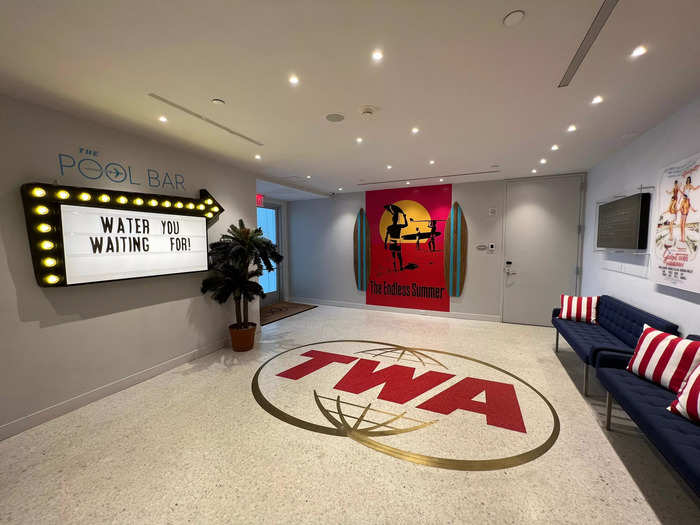
The infinity pool, the observation deck, and the Pool Bar are open year-round. Entry policies and schedules are broken down into two groups: summer/fall and winter/spring.
I visited in August, which meant I had to pay $25 for a pool reservation. However, I learned that non-hotel guests had to pay $50 for reservations in the summer.
The enormous rooftop infinity pool looked directly out at the airport's runways.
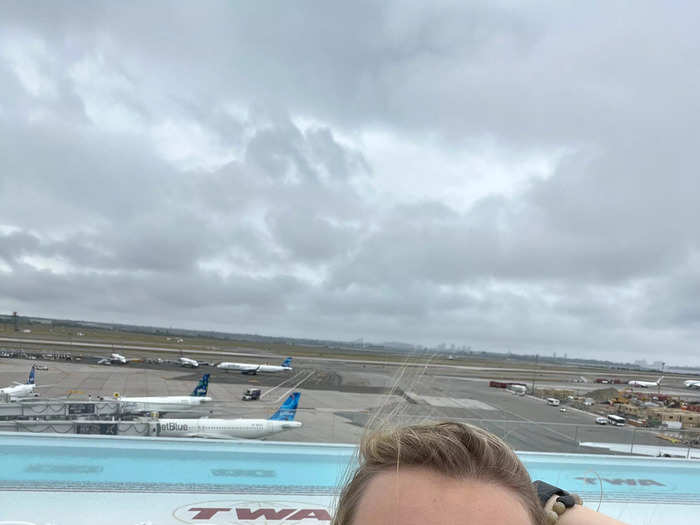
The rooftop infinity pool had views of the 12,079-foot-long runway and exceeded all of my expectations.
In the winter, the hotel heats the water up to a toasty 95 degrees Fahrenheit, so guests can enjoy it year-round.
I wasn't allowed to bring any baggage with me into the pool area.
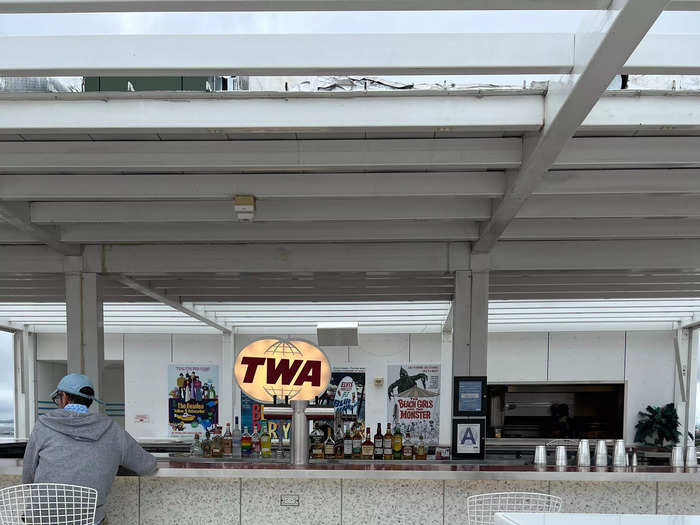
Guests can only bring personal items in clear plastic bags when they come to the pool area and observation deck. I couldn't even being my laptop bag to get some work done.
However, I understood the hotel's desire for people to enjoy their time on the pool deck, sipping on a signature cocktail and watching the planes take off and land instead of working.
The observation deck definitely offered the best view in the entire hotel.
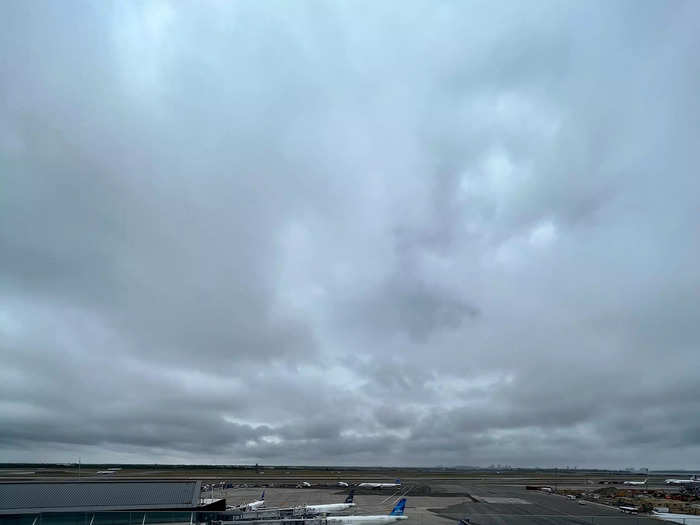
From here, I could see the Bay Runway, which measures 14,511 feet. This runway has historical significance and served as the backup landing strip for NASA's Space Shuttle.
Overall, I really enjoyed my visit to the TWA Hotel.
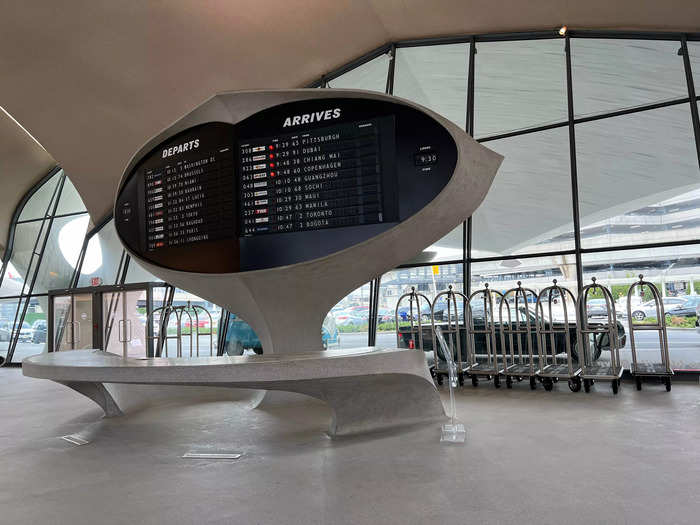
I appreciated that TWA Hotel wasn't just a place to sleep. It was a historically accurate, immersive cultural experience with plenty of on-site activities to enjoy.
It was amazing to see how far aviation technology has come since 1962 — and I'm looking forward to watching it progress in the next few decades.
Popular Right Now
Popular Keywords
Advertisement